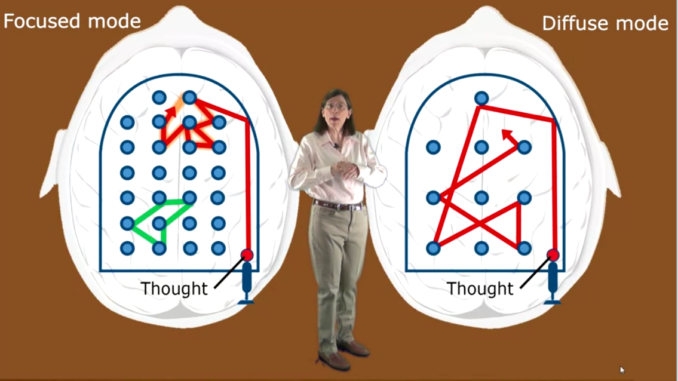
If you care about the future of distance learning and you have not yet encountered Barbara Oakley and Terrence Sejnowski’s Learning How to Learn MOOC on Coursera, you are in for a real treat. The course is a practical introduction to information on learning derived from cognitive and brain science that distinguishes itself in a number of important ways.
First, the course is incredibly useful for learners at just about all stages. It is accessible and engaging in tone and design. Second, it makes use of research-based principles for its very configuration so that the course illustrates the principles it is trying to convey.
Perhaps as significant as the course itself are the related materials in which Oakley and Sejnowski discuss how the course was developed. In What We Learned from Creating One of the World’s Most Popular MOOCs, Oakey and Sejnowski step through the course development process and connect this work to the research on multimedia learning, notably Richard Mayer’s work. They also highlight some of the very practical steps they took as they learned how to become online video teachers. They note both those aspects of the course development process that were research-based and those for which they would like some additional research. For a bit more of this background, see Lessons from a Basement Studio, Barbara Oakley’s informal report on how she made the personal transition (with help from her husband) into an online video instructor. For even more background, see Terry Sejnowski’s account of the course on pages 185-189 of his book, The Deep Learning Revolution (Cambridge: MIT Press, 2018).
Learning How to Learn and Oakley and Sejnowski are significant for thinking about distance learning for two reasons. They not only exemplify an important course development approach, they also personify a faculty engagement model. The development of Learning How to Learn was done with very little outside help at a fraction of the cost of many online offerings. This was possible because the faculty involved took an active and central role in all aspects of the course development process. Because the course was essentially hand-crafted by the instructors, the course content and course design are fully integrated and the instructor presence is high fidelity.
Back in the early 2000’s I led a team responsible for providing initial assessments of a range of online courses being proposed for offering on Columbia’s Fathom.com online learning portal. We reviewed hundreds of courses from a variety of institutions when online course development practices were just being formed. Although most of the courses were adequate, a few stood out from the rest, and these were invariably those in which the faculty presence in developing the course and its online configuration were strongest. In these courses the presence of the instructor as an expert in the field was woven into the course design, not just the content. Efforts to standardize and “professionalize” online course development may be taking us in a different direction, and Learning How to Learn provides a reminder that there are other options.


Be the first to comment